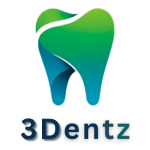Submit Your Details to get callback from our team!
CAM
CAM
CAM (Computer-Aided Manufacturing) software in dentistry refers to specialized software used to plan and control the manufacturing processes of dental prosthetics, restorations, and appliances based on digital designs created in CAD (Computer-Aided Design) software. CAM software plays a critical role in modern dental workflows by facilitating the fabrication of precise and custom-made dental products.
CAM software is used to translate digital design data created in CAD software into instructions for manufacturing dental restorations and prosthetics. It enables the precise and automated production of dental products using various manufacturing technologies, including milling, 3D printing, and subtractive manufacturing methods.
After designing a dental restoration or appliance in CAD software and finalizing the digital design, the design data (often in the form of STL files) is exported to CAM software. CAM software analyzes the design data and generates toolpaths and machining instructions necessary to produce the physical object.
Key Features of CAM Software for Dentistry:
· Toolpath Generation: CAM software automatically generates toolpaths based on the digital design data, specifying the path and movements of cutting tools or additive manufacturing devices.
· Machining Simulation: CAM software allows for simulation of the manufacturing process, including virtual machining, to verify toolpaths, detect collisions, and optimize production efficiency.
· Material Selection and Optimization: CAM software provides options for selecting appropriate materials and optimizing cutting parameters (e.g., feed rate, spindle speed) for efficient manufacturing.
· Integration with Manufacturing Equipment: CAM software interfaces with CNC (Computer Numerical Control) milling machines, 3D printers, or other manufacturing devices to control the production process based on generated toolpaths.
CAM Technologies Used in Dentistry:
· CNC Milling: CAM software generates toolpaths for CNC milling machines to fabricate dental restorations from materials such as ceramics, resins, or metals.
· 3D Printing: CAM software prepares build files for 3D printers to produce dental models, surgical guides, aligners, and other dental products through additive manufacturing processes.
· Subtractive Manufacturing: CAM software supports subtractive manufacturing methods, including milling, grinding, and drilling, for precise fabrication of dental prosthetics.
Benefits of CAM Software in Dentistry:
· Automation: CAM software automates the manufacturing process, reducing manual intervention and improving production consistency and accuracy.
· Precision: CAM software ensures precise replication of digital designs into physical dental products, minimizing errors and wastage of materials.
· Customization: CAM software enables the customization of dental prosthetics and restorations based on patient-specific requirements and preferences.
Efficiency: CAM workflows optimize manufacturing efficiency, reducing turnaround times and enhancing productivity in dental laboratories and clinics.
